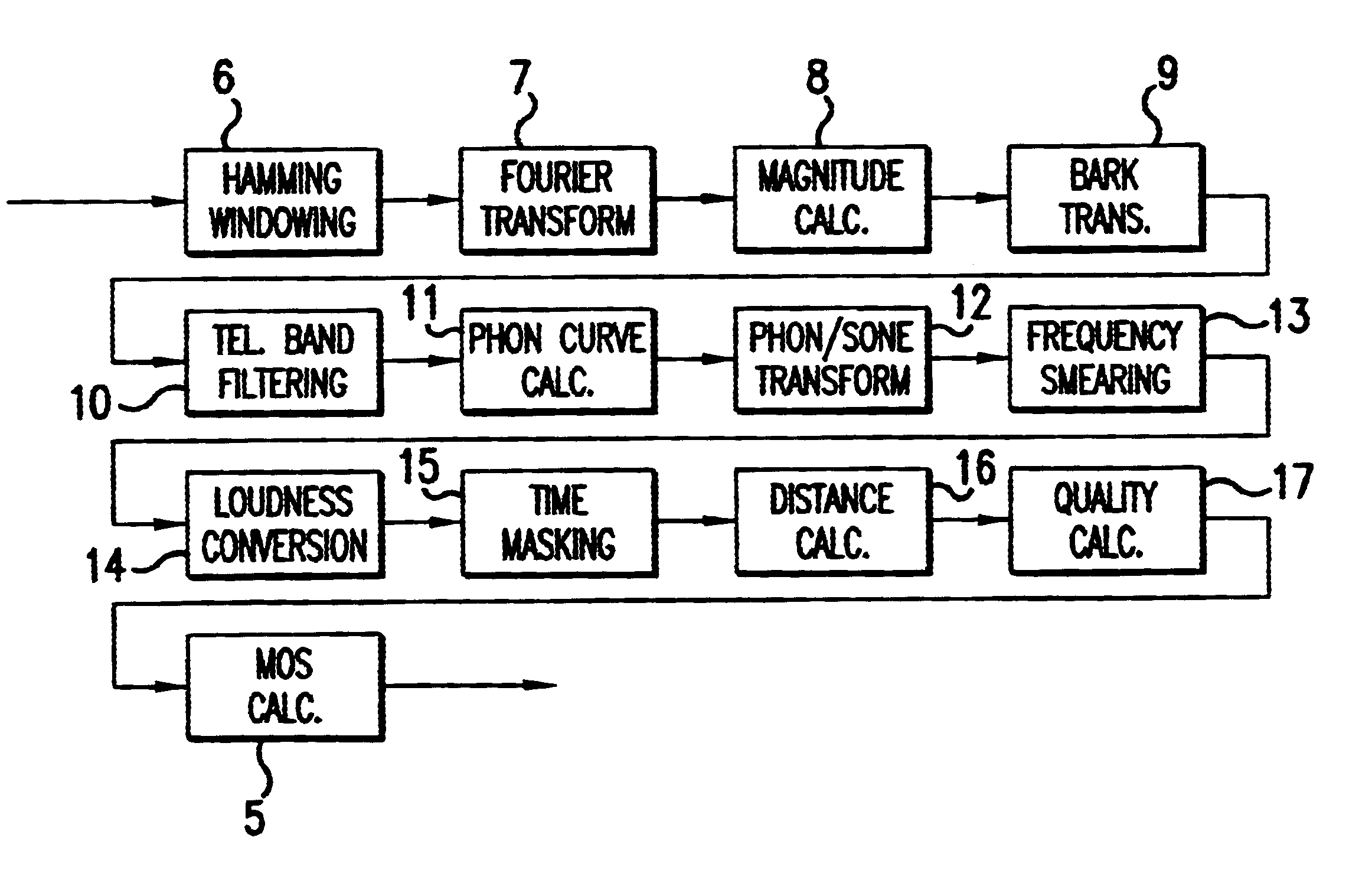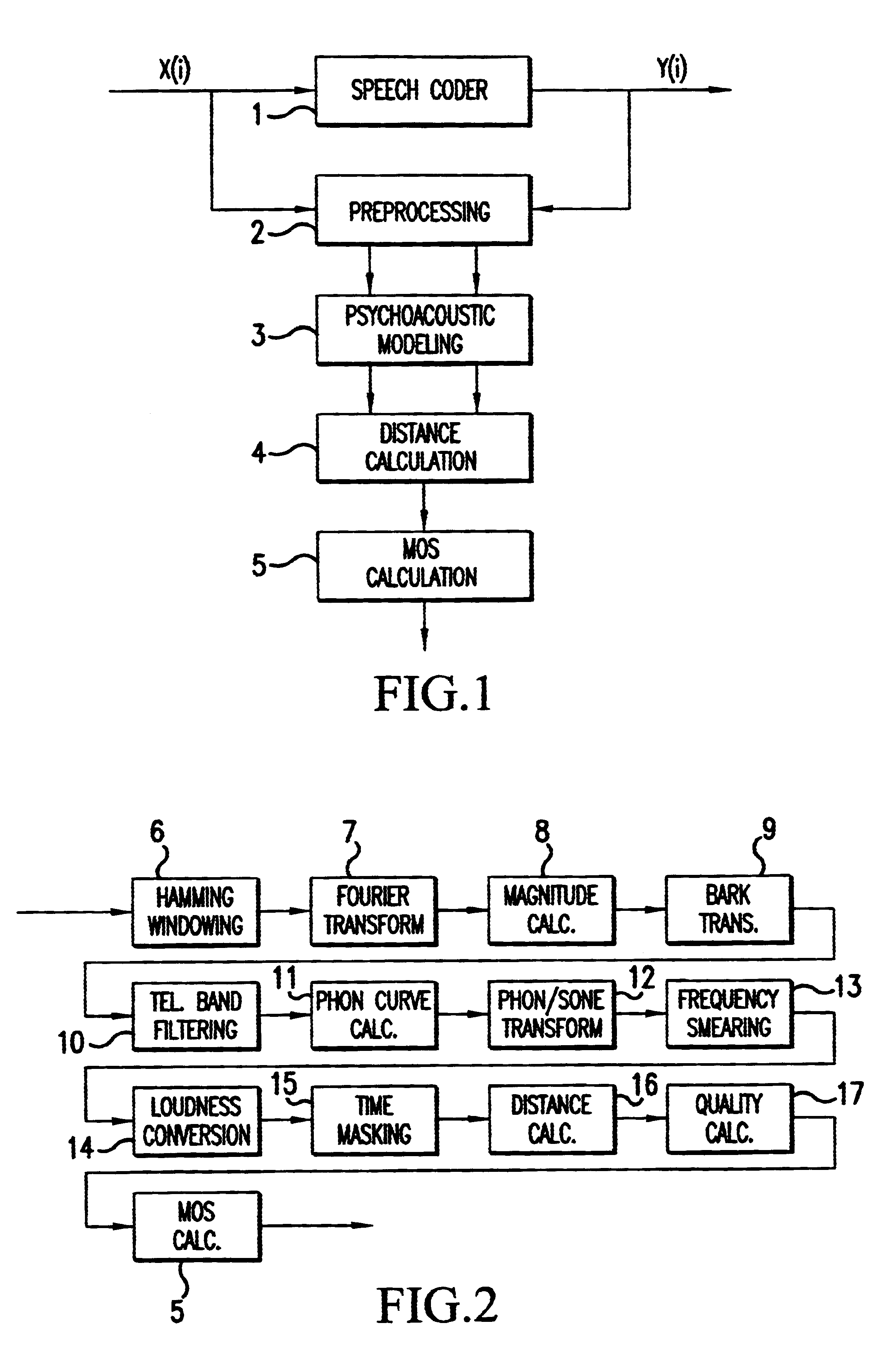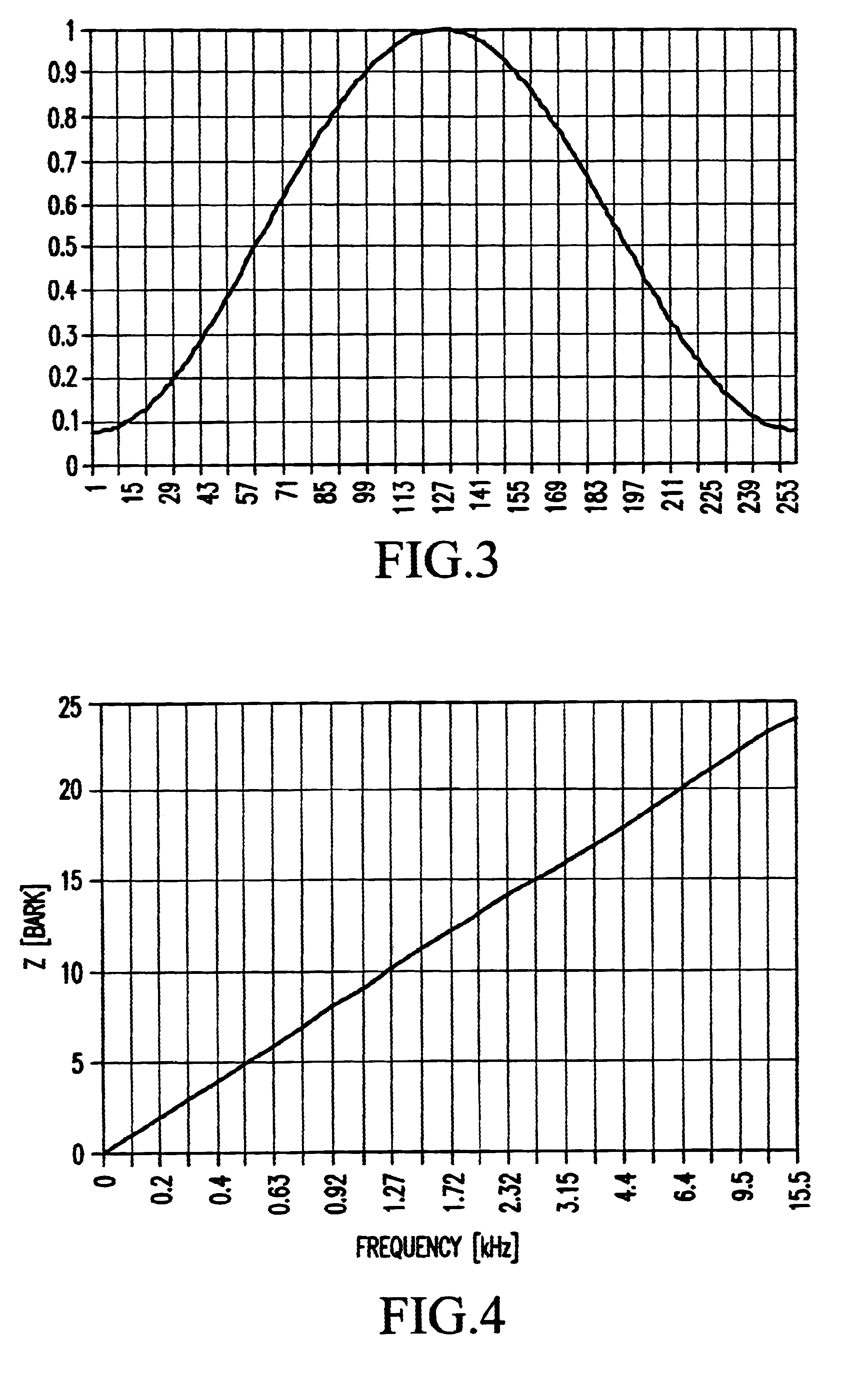Method for executing automatic evaluation of transmission quality of audio signals using source/received-signal spectral covariance
a technology of transmission quality and spectral covariance, applied in speech analysis, electrical equipment, wireless communication, etc., can solve problems such as inability to reproduce cases, difficulty in determining the extent of impairment, and inability to understand speech
- Summary
- Abstract
- Description
- Claims
- Application Information
AI Technical Summary
Benefits of technology
Problems solved by technology
Method used
Image
Examples
Embodiment Construction
A concrete illustrative embodiment will be explained in detail below with reference to the figures.
FIG. 1 shows the principle of the processing. A speech sample is used as the source signal x(i). It is processed or transmitted by the speech coder 1 and converted into a reception signal y(i) (coded speech signal) The said signals are in digital form. The sampling frequency is e.g. 8 kHz and the digital quantization 16 bit. The data format is preferably PCM (without compression).
The source and reception signals are separately subjected to preprocessing 2 and psychoacoustic modelling 3. This is followed by distance calculation 4, which assesses the similarity of the signals. Lastly, an MOS calculation 5 is carried out in order to obtain a result comparable with human evaluation.
FIG. 2 clarifies the procedures described in detail below. The source signal and the reception signal follow the same processing route. For the sake of simplicity, the process has only been drawn once. It is, ho...
PUM
 Login to View More
Login to View More Abstract
Description
Claims
Application Information
 Login to View More
Login to View More - R&D
- Intellectual Property
- Life Sciences
- Materials
- Tech Scout
- Unparalleled Data Quality
- Higher Quality Content
- 60% Fewer Hallucinations
Browse by: Latest US Patents, China's latest patents, Technical Efficacy Thesaurus, Application Domain, Technology Topic, Popular Technical Reports.
© 2025 PatSnap. All rights reserved.Legal|Privacy policy|Modern Slavery Act Transparency Statement|Sitemap|About US| Contact US: help@patsnap.com



